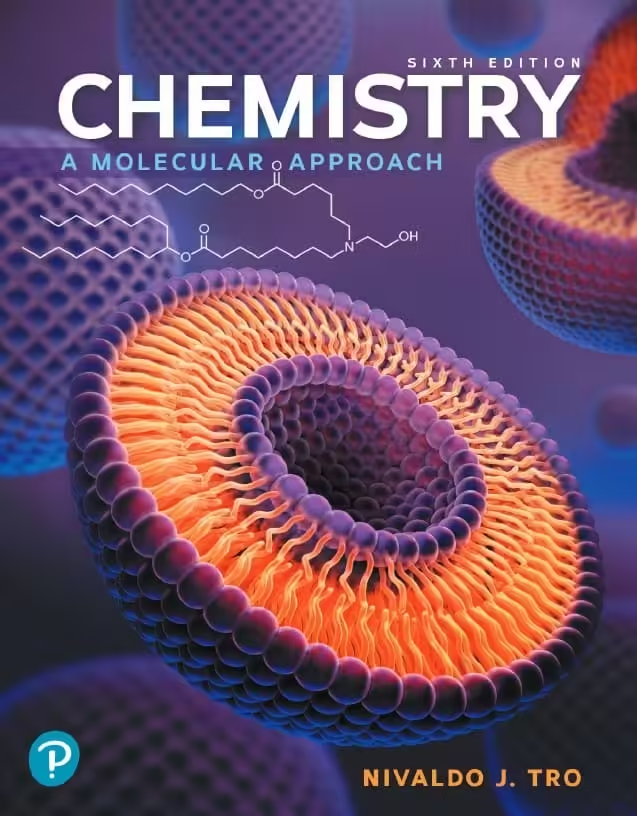 Free download Organic Chemistry Principles and Mechanisms (3rd edition) authored by Joel Karty in pdf.
Free download Organic Chemistry Principles and Mechanisms (3rd edition) authored by Joel Karty in pdf.
Organic Chemistry: Principles and Mechanisms (3rd Ed.) by Joel Karty offers a fresh approach to mastering organic chemistry by emphasizing the underlying principles and mechanisms that drive chemical reactions. Rather than focusing solely on memorization, Karty encourages students to build a conceptual framework, connecting key concepts like reaction mechanisms, structure, and reactivity.
With clear explanations, engaging examples, and a well-structured progression of topics, this textbook equips students with the tools needed to understand and apply organic chemistry in real-world contexts, making it an essential resource for both beginners and advanced learners.
When a novice student begins a new chapter on functional groups in a traditionally organized textbook, they often encounter a sequence of information that can be overwhelming. Take an alcohols chapter, for example. First, students are taught how to identify and name alcohols. Next, they delve into the physical properties of alcohols, followed by a study of their unique spectroscopic features.
The chapter then moves on to cover various methods for synthesizing alcohols from other compounds. Eventually, students arrive at the core of the chapter: the reactions alcohols undergo and the mechanisms behind them. Finally, they explore how these reactions fit into broader synthetic processes. Throughout the chapter, students are jumping between different concepts and themes.
Even within the section on reactions and mechanisms specific to a functional group, students are often presented with a range of unrelated reactions. For instance, in the alcohols chapter, students learn that alcohols can act as acids or bases, serve as nucleophiles in substitution or nucleophilic addition reactions, function as electrophiles in elimination reactions, and undergo oxidation.
This constant shift in focus within a functional group chapter can easily overwhelm students. The functional group approach does not provide clear guidance on what students should prioritize, either within a chapter or across multiple chapters. Lacking this direction and time to focus deeply, students often resort to memorizing what they believe is most important—typically, predicting reaction products—while neglecting fundamental concepts and mechanisms.
Contents
- Atomic and Molecular Structure
- Interchapter A. Nomenclature: The Basic System for Naming Organic Compounds, Alkanes, Haloalkanes, Nitroalkanes, Cycloalkanes, and Ethers
- Three-Dimensional Geometry, Intermolecular Interactions, and Physical Properties
- Valence Bond Theory and Molecular Orbital Theory
- Interchapter B. Naming Alkenes, Alkynes, and Benzene Derivatives
- Isomerism 1: Conformers and Constitutional Isomers
- Isomerism 2: Chirality, Enantiomers, and Diastereomers
- The Proton Transfer Reaction: An Introduction to Mechanisms, Equilibria, Free Energy Diagrams, and Charge Stability
- An Overview of the Most Common Elementary Steps
- Interchapter C. Molecular Orbital Theory and Chemical Reactions
- Interchapter D. Naming Compounds with a Functional Group that Calls for a Suffix: Alcohols, Amines, Ketones, Aldehydes, Carboxylic Acids, and Carboxylic Acid Derivatives
- An Introduction to Multistep Mechanisms: SN1 and E1 Reactions and Their Comparisons to SN2 and E2 Reactions
- Nucleophilic Substitution and Elimination Reactions 1: Competition among SN2, SN1, E2, and E1 Reactions
- Organic Synthesis 1: Nucleophilic Substitution and Elimination Reactions and Functional Group Transformations
- Organic Synthesis 2: Beginning Concepts in Designing Multistep Synthesis
- Electrophilic Addition to Nonpolar π Bonds 1: Addition of a Brønsted Acid
- Electrophilic Addition to Nonpolar π Bonds 2: Reactions Involving Cyclic Transition States
- Conjugation and Aromaticity
- Structure Determination 1: Mass Spectrometry
- Structure Determination 1: Infrared Spectroscopy and Ultraviolet–Visible Spectroscopy
- Structure Determination 3: Nuclear Magnetic Resonance Spectroscopy
- Nucleophilic Addition to Polar π Bonds 1: Addition of Strong Nucleophiles
- Nucleophilic Addition to Polar π Bonds 2: Weak Nucleophiles and Acid and Base Catalysis
- Redox Reactions: Organometallic Reagents and Their Reactions
- Organic Synthesis 3: Intermediate Topics in Synthesis Design
- Nucleophilic Addition–Elimination Reactions 1: The General Mechanism Involving Strong Nucleophiles
- Nucleophilic Addition–Elimination Reactions 2: Weak Nucleophiles
- Aromatic Substitution 1: Electrophilic Aromatic Substitution on Benzene; Useful Accompanying Reactions
- Aromatic Substitution 2: Reactions of Substituted Benzenes and Other Rings
- The Diels–Alder Reaction, Syn Dihydroxylation, and Oxidative Cleavage
- Reactions Involving Radicals
- Polymers
- Biomolecules 1: An Overview of the Structure, Chemical Properties, and Roles of the Molecules of Life
- Biomolecules 2: Representative
Free download Organic Chemistry Principles and Mechanisms (3rd edition) authored by Joel Karty in pdf from following download links.
To access the download links, please follow these instructions. If the links do not appear on your mobile device, try visiting this page using a laptop or desktop computer for better visibility.
Password for Download Links: chemistry.com.pk
File Size: 98.1 MB. Pages: 1672. Download Instructions. Please read Disclaimer.
You can also buy Organic Chemistry Principles and Mechanisms (3rd edition) authored by Joel Karty from Amazon by clicking the image below.

You may also like to download the following books for free:
- 100 Must-Know Mechanisms in Organic Chemistry by Roman A. Valiulin
- Organic Reaction Mechanisms, Selected Problems, and Solutions (2nd Ed.) by William C. Groutas and Athli D. Rathuayake
- Writing Reaction Mechanisms in Organic Chemistry (3rd Edition) by Kenneth A. Savin
Free Download Hundreds of Best-Selling Biology and Chemistry Books from Free Download Biology and Chemistry Books.
P.S: If the download link(s) is/are not working, kindly drop a comment below, so we’ll update the download link for you.
Happy studying!


